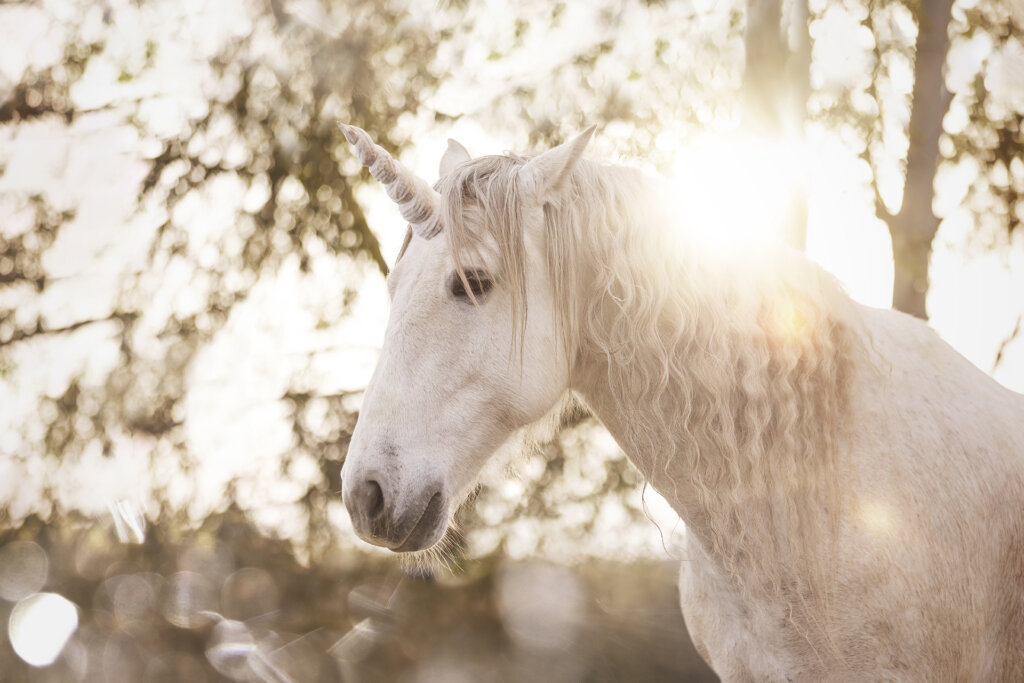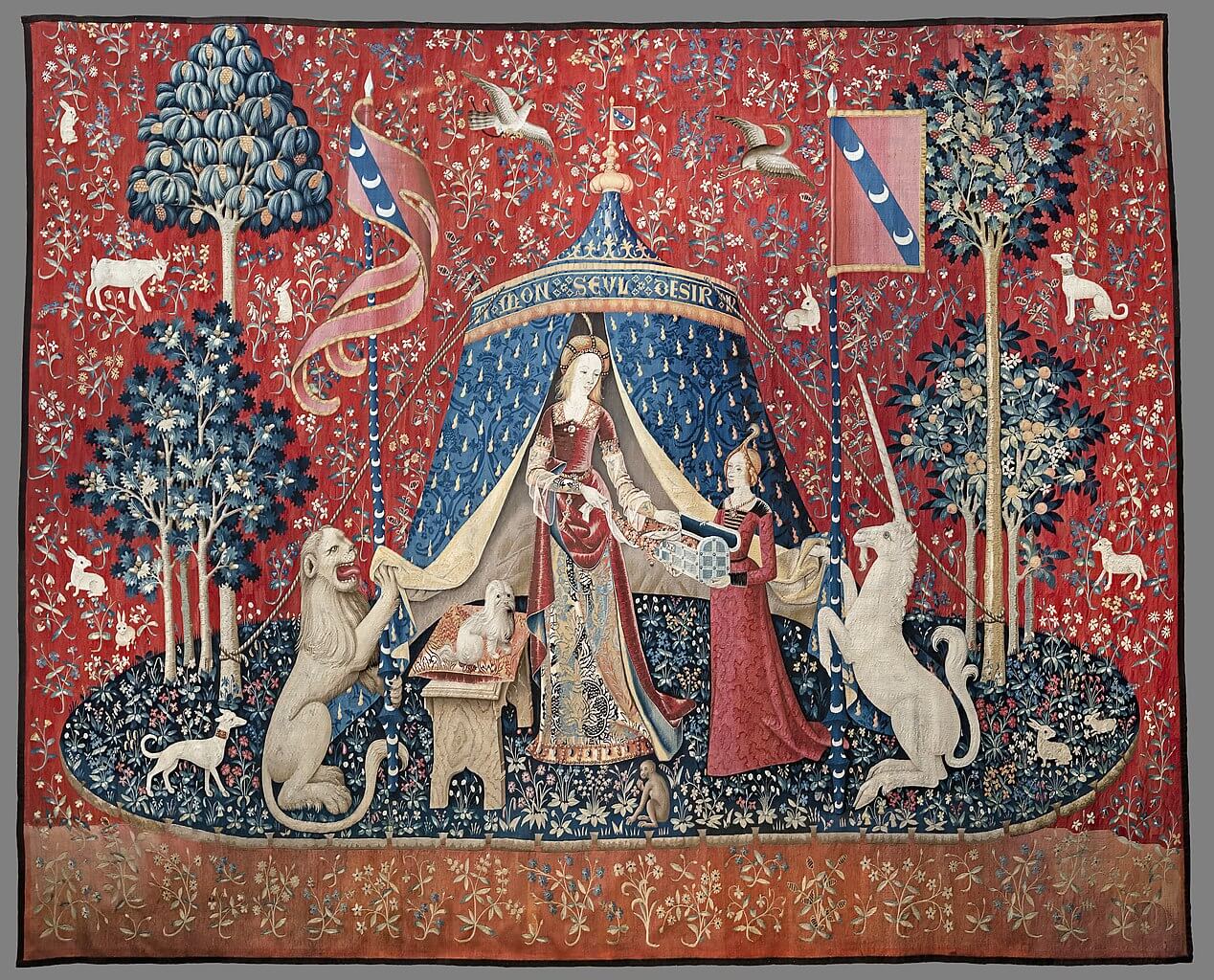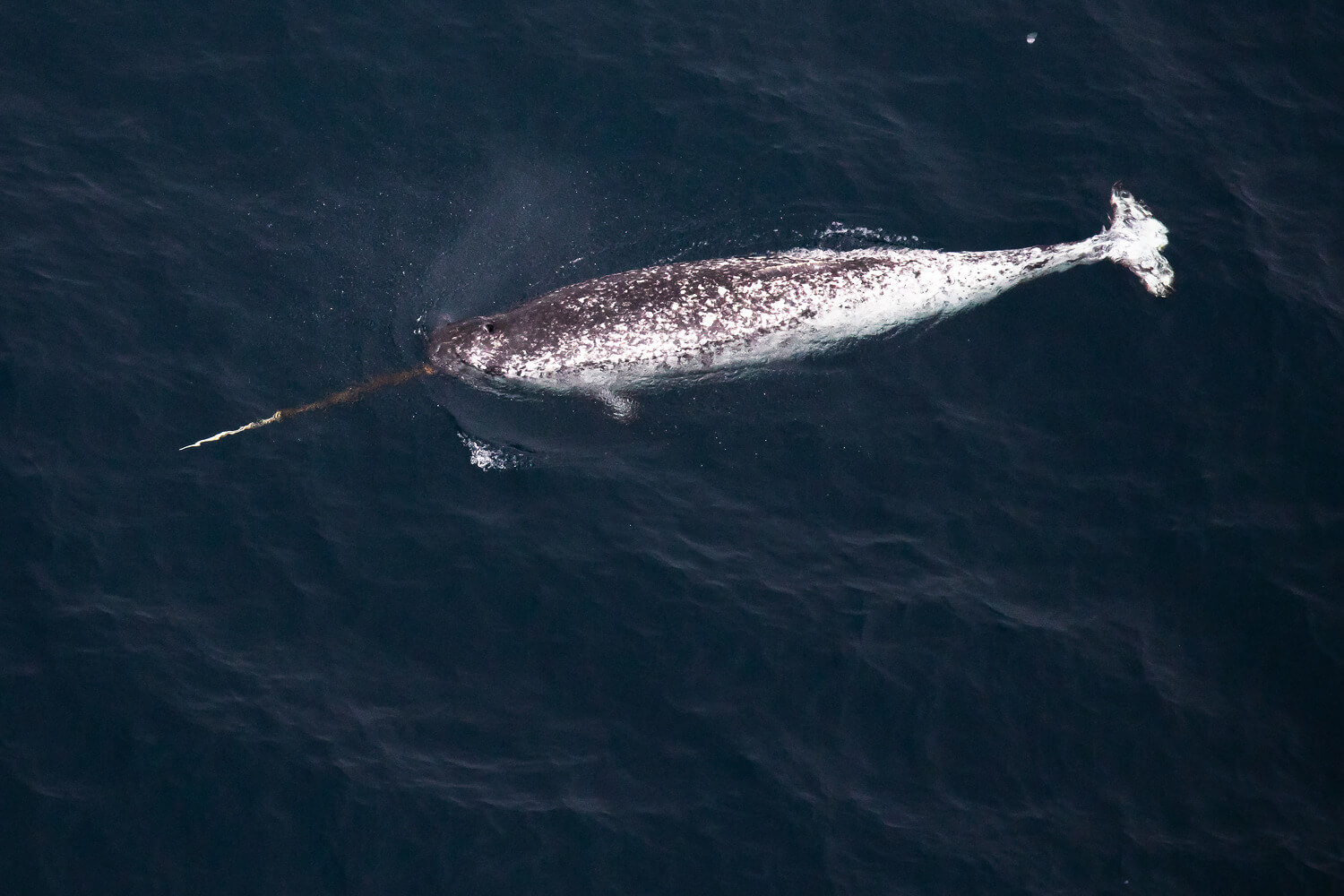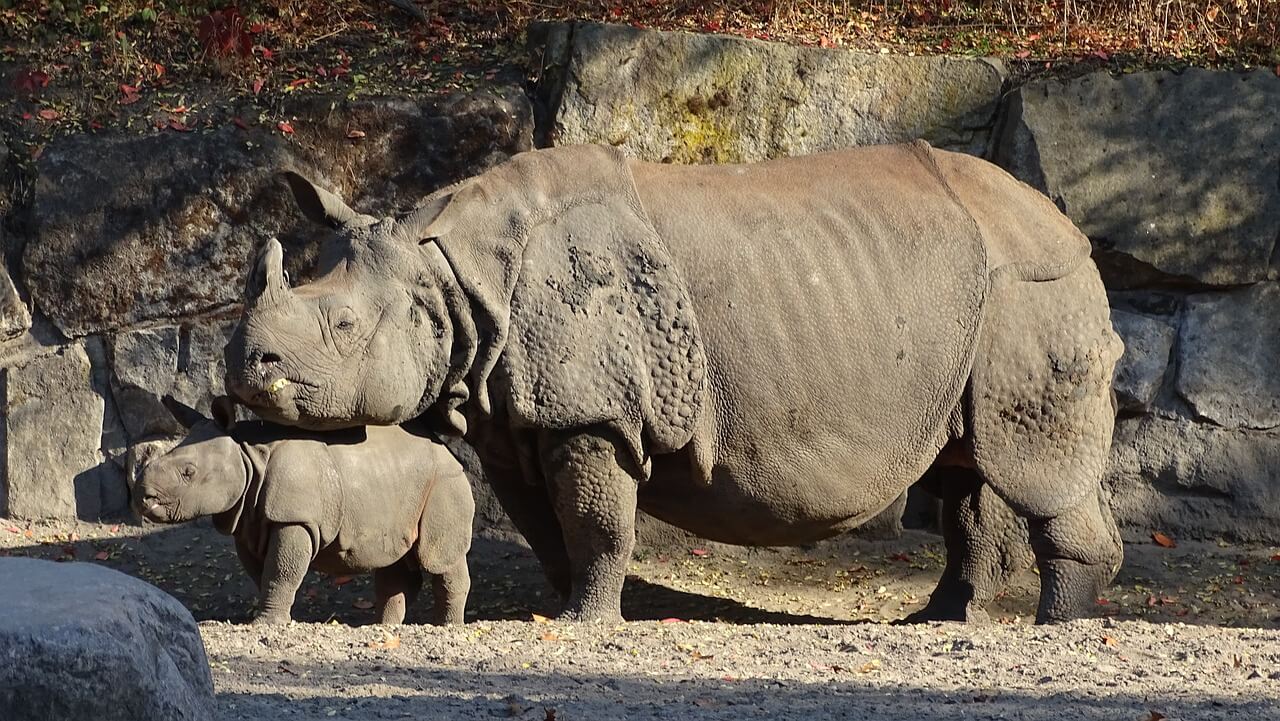The Unicorn: 3 Animals that Inspired this Fantastic Myth

The unicorn is one of the best-known mythological creatures of fairy tales and of all time. It’s often described as a horse or goat-like animal with a single horn on its forehead.
The myth of this magical equine gained momentum with the appearance of its bony, pointed projections in European markets. For centuries, healing powers and the ability to purify water were attributed to its horn.
However, there were no shortage of skeptics – such as the Danish zoologist Olaus Wormius. They were skeptical of these supposed medicinal properties and devoted themselves to the search for the horn’s true origin.
In line with this questioning, we can ask ourselves: to what species did the horns marketed in Europe belong? What real animals inspired the belief in this fantastic creature? If you want to know the answers to these questions and take a hjourney through the history of the unicorn, then keep reading.
Myth of the unicorn
In the 4th century BC, the Greek physician and historian, Ctesias, was a pioneer in making direct references to the unicorn. In his manuscript Indica -written with information supplied by travelers- he states that the unicorn came from India.
This first description details that it was a large “wild ass”, similar to a horse. Likewise, its body was white, except for its head, which was red. It also had dark blue eyes. Undoubtedly, the most outstanding feature was its sharp horn, white at its base, which was located in the middle of the forehead.
Ctesias – who made mention of the properties of this creature’s horn – was succeeded by Aristotle, Pliny the Elder, as well as Claudius Elianus and other scholars, who also made allusions to this fantastic equine.
The unicorn in the medieval bestiary

The medieval bestiary consisted of a compilation of information on all kinds of animals, both fantastic and real. It compiled physical descriptions, as well as legends or stories of different provenance – Hebrew, Asian, Indian, Egyptian, Roman or Greek – accompanied by illustrations of each species.
Among this collection, the best known in the Middle Ages was the Physiologus, created by an unknown author and written in Greek. In this book of the natural world, the unicorn was described as a horse or a goat, with a horn. It was attributed strength and speed, as well as purity and chastity. In fact, it could only be captured by a maiden, whom it submitted to.
The unicorn was a prized prey for healers, as its horn was used in concoctions and potions. It was believed to have regenerative power and to be an aphrodisiac.
For this reason, the horn of the narwhal or Indian rhinoceros was often sold, passing it off as that of a unicorn. Today, these beliefs are still practiced in some regions of Asia.
Animals that inspired the unicorn
Although various origins of the unicorn have been suggested, the representation of this creature as an animal originating in India suggests that the genesis of the myth may revolve around a fantastical view of the Indian rhinoceros. However, there are more species from land and sea that may have given rise to this mysterious equine, which causes so much fascination.
Let’s see which ones are the most iconic.
1. Giant Siberian unicorn

The genus Elasmotherium is popularly called the “giant Siberian unicorn” or “giant rhinoceros”. Elasmotherium, or Elasmotherium sibiricum, is the best-preserved species of this prehistoric rhinoceros that lived in present-day Russia.
It was a rhinoceros the size of an elephant, covered with hair and with a large single horn on its head.
Although this animal was estimated to have disappeared about 200,000 years ago, it’s believed to have lived until about 39,000 years ago in Central Europe and Central Asia. This is according to an article in the journal Nature Ecology & Evolution, published in 2018.
2. Narwhal

The narwhal is a real aquatic mammal that looks like a mythological being. The icy waters of the North Pole are its habitat. It’s known as “the unicorn of the seas” because of the horn on its forehead.
This little-known cetacean is a relative of beluga whales and is part of the whale family. Its horn is actually a tusk that can reach two meters in length and weigh more than 10 kg.
In ancient times, the function of this tusk wasn’t known. However, recent research has discovered that it’s used in hunting, and it moves it quickly to distract fish in order to eat them.
In addition, it has been observed that the tusk is only present in males. Another curious detail is that they are quite noisy. In fact, they emit different sounds to communicate or as echolocation.
3. Indian rhinoceros

The Indian rhinoceros (Rhinoceros unicornis) is one of three species that exist today in Asia. They have only one horn, just like the Javan rhinoceros – unlike the Sumatran and its African relatives, which have two.
In the Middle Ages it wasn’t common to have notions about the characteristics of a rhinoceros, after being forgotten by the disappearance of the circus shows of the Romans. Perhaps for this reason, the well-known explorer Marco Polo confused the rhinoceros with the unicorn during his journey through Asia.
Therefore, it seems that the origin of the unicorn lies in this animal.
Today, the Indian rhinoceros is the largest of the five existing species and is in a “vulnerable” state, according to the International Union for Conservation of Nature (IUCN) classification. Even today, the belief in the healing properties of its horn makes it an object of poaching.
The myth of a fantastic animal
If one thing is clear, it’s that the unicorn is one of the mythological animals par excellence. Although its current representation is far from the original, the admiration for this creature is still alive and well. Since the mention of the physician Ctesias, the belief in a fantastic creature influenced historians and scholars of the species who wrote about this magical equine.
From then on, the unicorn acquired characteristics and qualities that were notoriously evidenced in the art of the Middle Ages and the Renaissance. One of the most outstanding was the religious symbolism, linked to purity.
The interest in this species was born from the alert eyes of European travelers, who creatively described species such as the Indian rhinoceros. This fascination with the unicorn can be channeled into the conservation of the animals that inspired the myth.
All cited sources were thoroughly reviewed by our team to ensure their quality, reliability, currency, and validity. The bibliography of this article was considered reliable and of academic or scientific accuracy.
- Christen, A. G., & Christen, J. A. (2011). The unicorn and the narwhal: a tale of the tooth. Journal of the History of Dentistry, 59(3), 135-142. https://pubmed.ncbi.nlm.nih.gov/22372187/#:~:text=The%20unicorn%20myth%20originated%20shortly,the%20treatment%20of%20various%20diseases.
- Duffin, C. J. (2017). ‘Fish’, fossil and fake: medicinal unicorn horn. Geological Society, London, Special Publications, 452(1), 211-259. https://www.lyellcollection.org/doi/abs/10.1144/sp452.16
- Ellis, S. & Talukdar, B. 2019. Rhinoceros unicornis. The IUCN Red List of Threatened Species 2019: e.T19496A18494149. Consultado el 23 de mayo de 2023. https://dx.doi.org/10.2305/IUCN.UK.2019-3.RLTS.T19496A18494149.en
- Fischer, L. P. (2011). The unicorn and the unicorn horn among apothecaries and physicians. Histoire des Sciences Medicales, 45(3), 265-274. https://pubmed.ncbi.nlm.nih.gov/22073757/
- Graham, Z. A., Garde, E., Heide-Jørgensen, M. P., & Palaoro, A. V. (2020). The longer the better: evidence that narwhal tusks are sexually selected. Biology Letters, 16(3), 20190950. https://royalsocietypublishing.org/doi/10.1098/rsbl.2019.0950#RSBL20190950C1
- Kosintsev, P., Mitchell, K. J., Devièse, T., van Der Plicht, J., Kuitems, M., Petrova, E., Tikhonov, A., Higham, T., Comeskey, D., Turney, C., Cooper, A., van Kolfschoten, T., Stuart, A., & Lister, A. M. (2019). Evolution and extinction of the giant rhinoceros Elasmotherium sibiricum sheds light on late Quaternary megafaunal extinctions. Nature Ecology & Evolution, 3(1), 31-38. https://www.nature.com/articles/s41559-018-0722-0
- McCormick-Thompson, B. (2018) From Narwhals to — Unicorns?! The Whaling Museum & Education Center. Consultado el 22 de mayo de 2023. http://www.cshwhalingmuseum.org/1/post/2018/08/from-narwhals-to-unicorns.html
- Nweeia, M. T., Eichmiller, F. C., Hauschka, P. V., Donahue, G. A., Orr, J. R., Ferguson, S. H., … & Kuo, W. P. (2014). Sensory ability in the narwhal tooth organ system. The Anatomical Record, 297(4), 599-617. https://anatomypubs.onlinelibrary.wiley.com/doi/10.1002/ar.22886
- Rodríguez, L. (2014). Unicornio en el mundo cristiano. Base de datos digital de Iconografía Medieval. Universidad Complutense de Madrid. Consultado el 22 de mayo de 2023. https://www.ucm.es/bdiconografiamedieval/unicornio-en-el-mundo-cristiano
- Roig Condomina, V. (1990). Rhinoceros versus unicornem. En: Ars Longa: Cuadernos de Arte, No. 1: 81-87. https://ojs.uv.es/index.php/arslonga/article/view/11547
- Smith, H. (2020). The Unicorn Myth. Consultado el 23 de mayo de 2023. https://www.worldhistory.org/article/1629/the-unicorn-myth/
